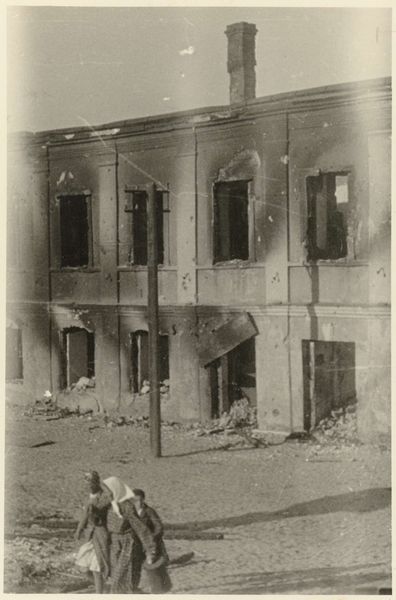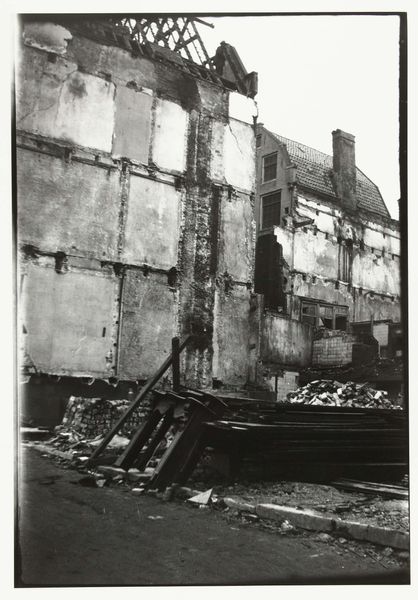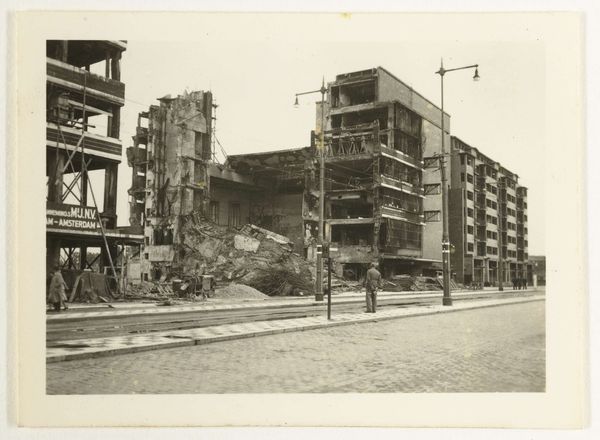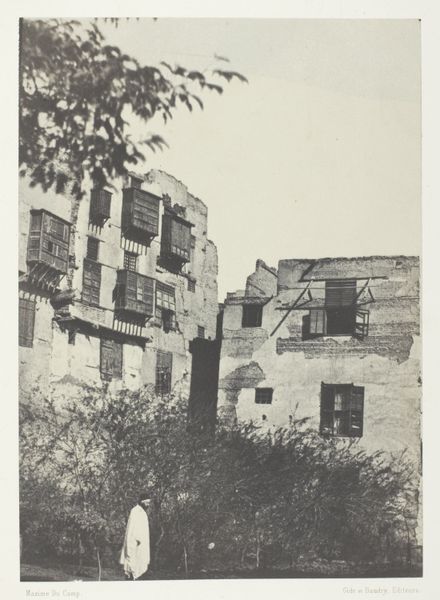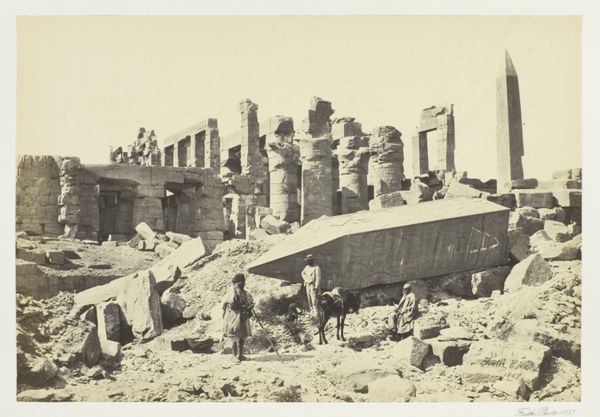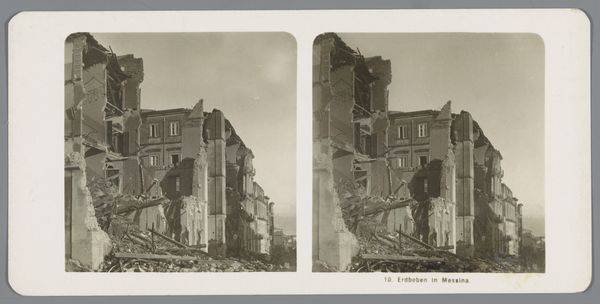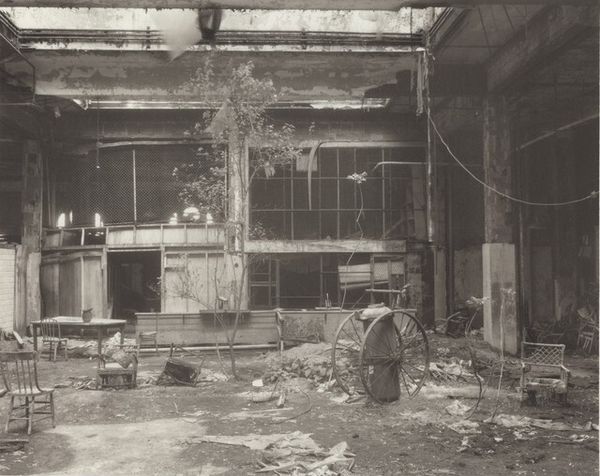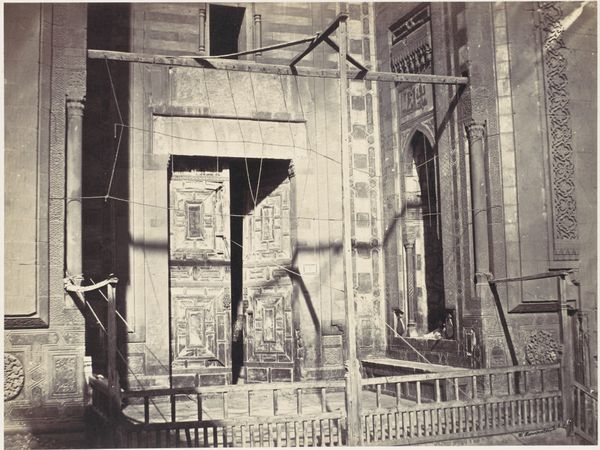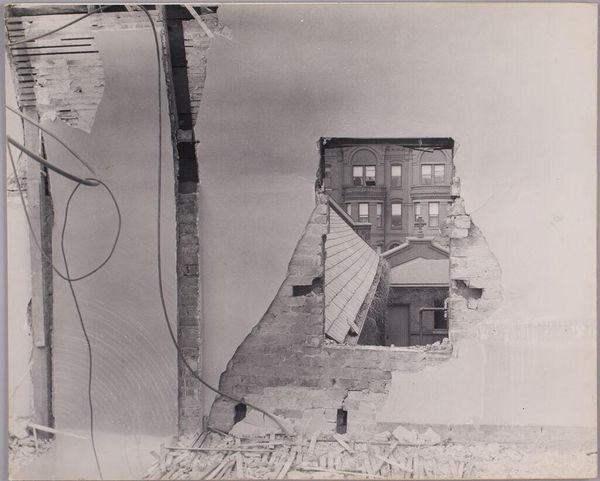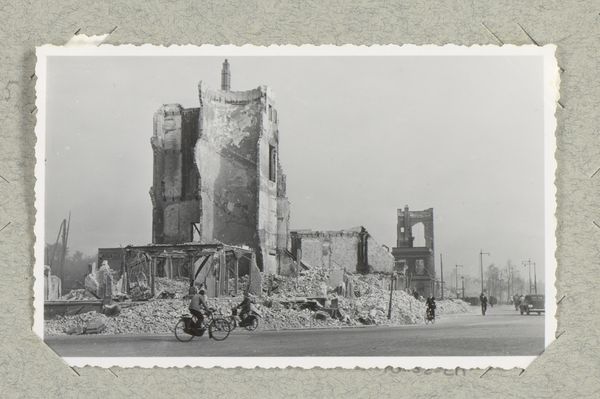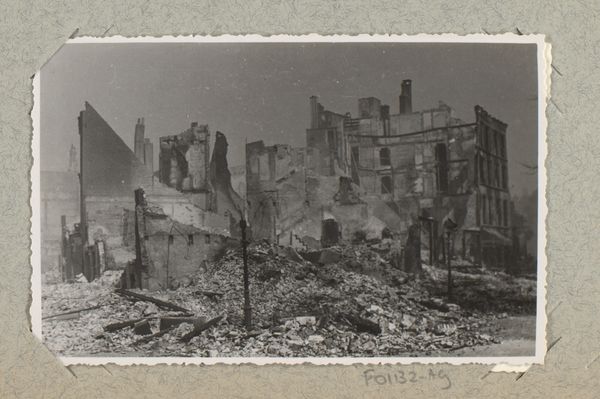
Dimensions: height 8.5 cm, width 6 cm
Copyright: Rijks Museum: Open Domain
Curator: This gelatin-silver print, titled "In brand gevlogen huis in Rotterdam," captures a fire-stricken house and was created circa 1940-1946 by an anonymous photographer. The photograph resides here at the Rijksmuseum. Editor: It's devastating. The sheer volume of rubble dominates the foreground, and those vacant window spaces staring out... It speaks volumes, even without knowing the specific historical context. Curator: Indeed. The composition, while seemingly straightforward, uses the stark contrast between the ravaged building and the heap of debris to create a visual dichotomy—a dialectic, if you will—between what was and what remains. Notice how the architectural lines, though fractured, still assert a verticality, defying the horizontal chaos at its base. Editor: I'm immediately drawn to the process here; this wasn't just about documentation. Consider the labor: clearing debris, rebuilding, reclaiming a shattered place. And silver gelatin printing - what a fragile material to hold such brutal imagery. The means of production are intrinsically connected to themes of loss, recovery, and the materiality of memory. Curator: Precisely. The photographic medium, inherently indexical, lends an undeniable gravitas to the scene. The gray scale emphasizes the textural differences—the smooth facade versus the jagged remains. And the implied perspective, positioned slightly above, grants the viewer a comprehensive view of the structural damage and a reflective remove, which enables one to grasp the enormity of the scene's desolation. Editor: Right. Beyond that stark beauty, one has to imagine the social impact, the displaced communities, the lost belongings turned to ash and dust in that rubble. Every brick in that heap likely represents someone’s shattered reality; from the sourcing of materials to the laying of each brick by labourers now dispossessed, the photo becomes a powerful indictment of war's total impact on ordinary lives and places. Curator: I appreciate that perspective, particularly your insistence on considering the individuals affected by the event, adding another layer of complexity to interpreting this devastating depiction of architectural damage. Editor: Exactly. It compels one to think of war beyond grand strategies and rather, its terrible lived reality—an artistic record wrought through a material practice laden with consequence.
Comments
No comments
Be the first to comment and join the conversation on the ultimate creative platform.
